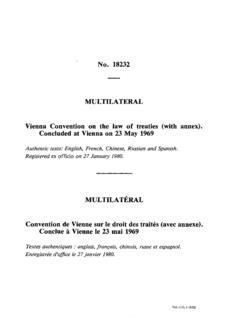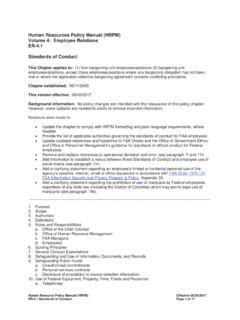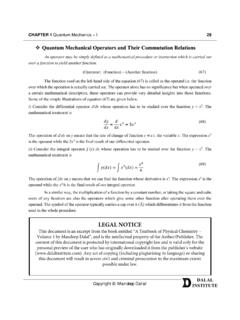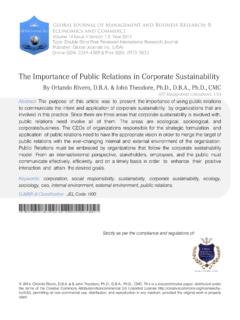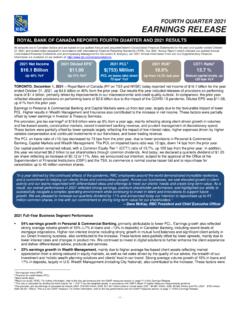Transcription of Maxwell relations - USTC
1 Maxwell relationsMaxwell's relations are a set ofequations in thermodynamics which arederivable from the symmetry of secondderivatives and from the definitions ofthe thermodynamic potentials. eserelations are named for the nineteenth-century physicist James Clerk four most commonMaxwell relationsDerivationDerivation based on JacobiansGeneral Maxwell relationshipsSee also e structure of Maxwell relations is astatement of equality among the secondderivatives for continuous functions. Itfollows directly from the fact that theorder of differentiation of an analytic function of two variables is irrelevant (Schwarz theorem). In the case of Maxwellrelations the function considered is a thermodynamic potential and xi and xj are two different natural variables for thatpotential:Schwarz' theorem (general)where the partial derivatives are taken with all other natural variables held constant.
2 It is seen that for everythermodynamic potential there are n(n 1)/2 possible Maxwell relations where n is the number of natural variables forthat potential. e substantial increase in the entropy will be verified according to the relations satisfied by the laws ofthermodynamicsFlow chart showing the paths between the Maxwell relations . P:pressure, T: temperature, V: volume , S: entropy, : coefficient ofthermal expansion, : compressibility, CV: heat capacity atconstant volume , CP: heat capacity at constant e four most common Maxwell relations are the equalities of the second derivatives of each of the four thermodynamicpotentials, with respect to their thermal natural variable (temperatureT; or entropyS) and their mechanical naturalvariable (pressureP; or volumeV): Maxwell 's relations (common)where the potentials as functions of their natural thermal and mechanical variables are the internal energyU(S, V),enthalpyH(S, P), Helmholtz free energyF(T, V) and Gibbs free energyG(T, P).
3 E thermodynamic square can be used asa mnemonic to recall and derive these relations . e usefulness of these relations lies in their quantifying entropychanges, which are not directly measurable, in terms of measurable quantities like temperature, volume , and relations are based on simple partial differentiation rules, in particular the totaldifferential of a function andthe symmetry of evaluating second order partial of the Maxwell relation can be deduced from thedifferential forms of the thermodynamic potentials:The differential form of internal energy U isThis equation resembles total differentials of the formIt can be shown that for any equation of the formthatConsider, the equation.
4 We can now immediately see that e four most common Maxwell relationsDerivationSince we also know that for functions with continuous second derivatives, themixed partial derivatives are identical (Symmetry of second derivatives), thatis, thatwe therefore can see thatand therefore thatDerivation of Maxwell Relation from Helmholtz Free energyThe differential form of Helmholtz free energy isFrom symmetry of second derivativesand therefore thatThe other two Maxwell relations can be derived from differential form ofenthalpy and the differential form of Gibbs free energy in a similar way. So all Maxwell Relationships abovefollow from one of the Gibbs derivationCombined form first and second law of thermodynamics, ( )U, S, and V are state functions.
5 Let,Substitute them in and one gets,And also written as,comparing the coefficient of dx and dy, one getsDifferentiating above equations by y, x respectively( )and( )U, S, and V are exact differentials, therefore,Subtract eqn(2) and (3) and one getsNote: The above is called the general expression for Maxwell 'sthermodynamical 's first relationAllow x = S and y = V and one getsMaxwell's second relationAllow x = T and y = V and one getsMaxwell's third relationAllow x = S and y = P and one getsMaxwell's fourth relationAllow x = T and y = P and one getsMaxwell's fifth relationAllow x = P and y = V = 1 Maxwell 's sixth relationAllow x = T and y = S and one gets = 1If we view the first law of thermodynamics,as a statement about differential forms, and take the exterior derivative of this equation, we getsince.
6 Is leads to the fundamental identity e physical meaning of this identity can be seen by noting that the two sides are the equivalent ways of writing thework done in an infinitesimal Carnot cycle. An equivalent way of writing the identity is e Maxwell relations now follow directly. For example,Derivation based on Jacobians e critical step is the penultimate one. e other Maxwell relations follow in similar fashion. For example, e above are not the only Maxwell relationships. When other work terms involving other natural variables besides thevolume work are considered or when the number of particles is included as a natural variable, other Maxwell relationsbecome apparent. For example, if we have a single-component gas, then the number of particles N is also a naturalvariable of the above four thermodynamic potentials.
7 E Maxwell relationship for the enthalpy with respect to pressureand particle number would then be:where is the chemical potential. In addition, there are other thermodynamic potentials besides the four that arecommonly used, and each of these potentials will yield a set of Maxwell equation can be re-expressed using the relationshipwhich are sometimes also known as Maxwell of thermodynamic equationsThermodynamic equationsRetrieved from " "This page was last edited on 15 March 2018, at 14 is available under the Creative Commons Attribution-ShareAlike License; additional terms may using this site, you agree to the Terms of Use and Privacy Policy. Wikipedia is a registered trademark ofthe Wikimedia Foundation, Inc.
8 , a non-profit Maxwell relationshipsSee also







